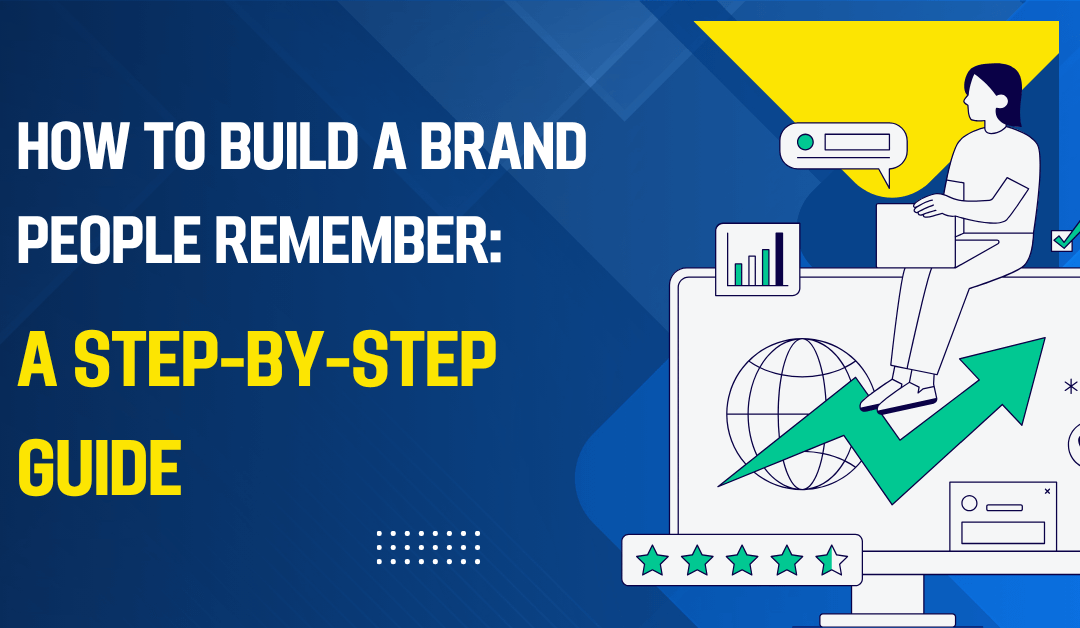A product or service isn’t enough. You need a brand. A brand is the story, the feeling, and the promise you make to your customers. It’s what transforms a one-time buyer into a loyal advocate. But it doesn’t happen by accident. It requires a deliberate and strategic approach. If you’re wondering where to start, you’re in the right place. This guide provides a clear roadmap on how to build a brand that not only gets noticed but becomes unforgettable.
Step 1: Define Your Brand’s Foundation
Before you can think about logos or colors, you must look inward. The foundation of any strong brand is a deep understanding of its core purpose. This is about defining your ‘why’. Why does your business exist beyond making a profit?
- Mission: What is your purpose? What do you aim to do? (e.g., “To organize the world’s information.”)
- Vision: What future do you want to help create? (e.g., “A world where anyone can belong anywhere.”)
- Values: What principles guide your actions and decisions? (e.g., Integrity, Innovation, Customer-Centricity).
Answering these questions gives your brand a soul and a direction for every decision you’ll make.
Step 2: Pinpoint Your Target Audience
You cannot be everything to everyone. Trying to appeal to the masses often results in appealing to no one. The key is to identify exactly who your ideal customer is. Think beyond basic demographics and dive into their psychology.
Create a detailed customer persona:
- What are their goals and aspirations?
- What challenges do they face that you can solve?
- Where do they spend their time online?
- What kind of language do they use?
When you know who you’re talking to, crafting a message that resonates becomes infinitely easier.
Step 3: Craft Your Unique Positioning and Messaging
With a defined purpose and audience, you can now carve out your unique space in the market. This is your brand positioning—what makes you different from the competition. Are you the most affordable option, the most premium, the most innovative, or the most user-friendly?
Once you have your positioning, develop your brand voice and messaging:
- Brand Voice: If your brand were a person, what would it sound like? Authoritative and professional, or friendly and witty?
- Tagline: A short, memorable phrase that captures your brand’s essence (e.g., Nike’s “Just Do It”).
- Value Proposition: A clear statement explaining the benefit you offer and how you solve your customer’s problem.
Mastering this is a critical part of how to build a brand that communicates its value instantly.
Step 4: Create a Memorable Visual Identity
This is the step most people associate with branding, and for good reason—it’s the face of your company. Your visual identity translates your brand’s core values and personality into tangible design elements.
Key components include:
- Logo: A simple, versatile, and memorable mark that represents your brand.
- Color Palette: Colors evoke emotions. Choose a palette that aligns with your brand’s personality.
- Typography: The fonts you use say a lot about your brand—are you modern, traditional, elegant, or bold?
- Imagery: The style of photos, illustrations, and graphics you use should be consistent and reflect your brand’s aesthetic.
Step 5: Integrate Your Brand Across All Platforms
Consistency is the secret ingredient that builds recognition and trust. Your brand must look, sound, and feel the same everywhere your audience interacts with it. This creates a cohesive and reliable brand experience. True consistency is the secret to how to build a brand that feels familiar and trustworthy.
Review every customer touchpoint, including your:
- Website and blog
- Social media profiles
- Email marketing
- Packaging and products
- Customer service interactions
Step 6: Launch, Engage, and Evolve
Building a brand is not a “set it and forget it” task. It’s a living entity that grows and adapts. Once you’ve established your foundation, launch it into the world and start telling your story through content marketing, social media, and advertising.
Most importantly, listen to your audience. Pay attention to feedback, monitor conversations about your brand, and don’t be afraid to refine your approach as your business grows. Understanding this is vital for anyone asking how to build a brand with staying power.
Conclusion: Your Brand is Your Legacy
Building a brand is an intentional journey of defining who you are, who you serve, and why it matters. By following these steps, you can move from being just another business to becoming a meaningful and memorable brand. You now have the framework for how to build a brand that people not only recognize but also connect with on a deeper level.

